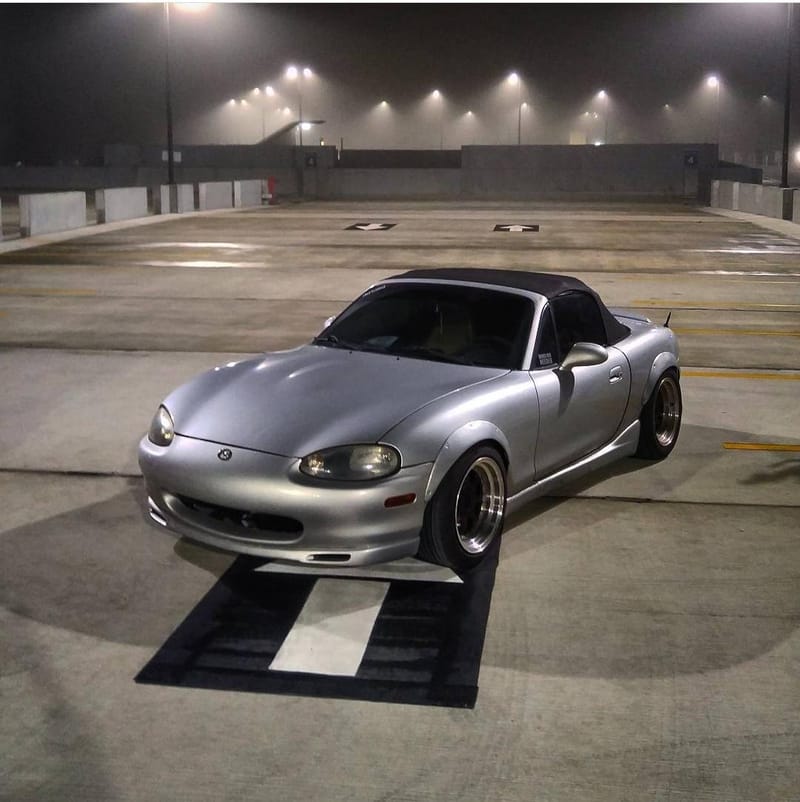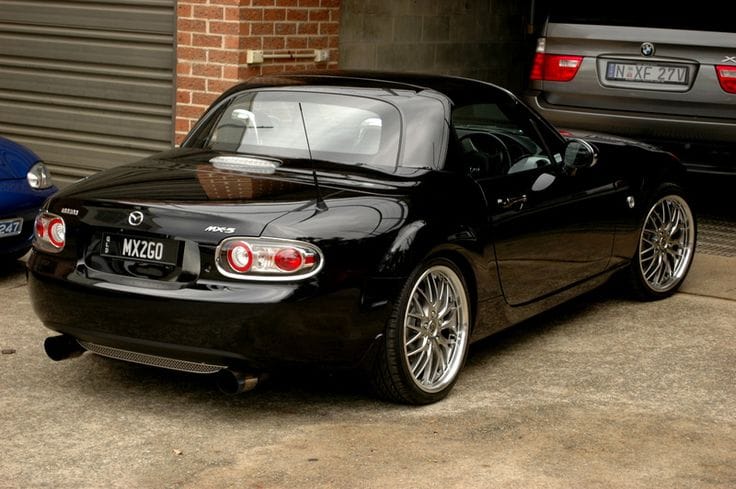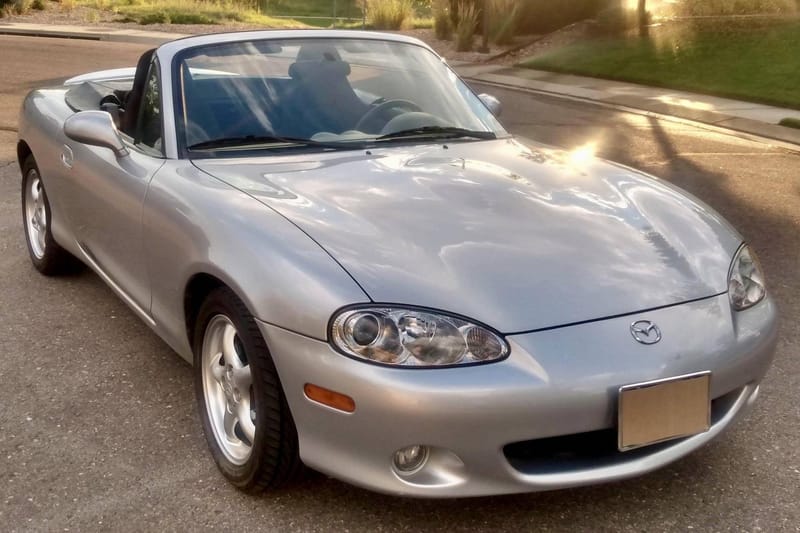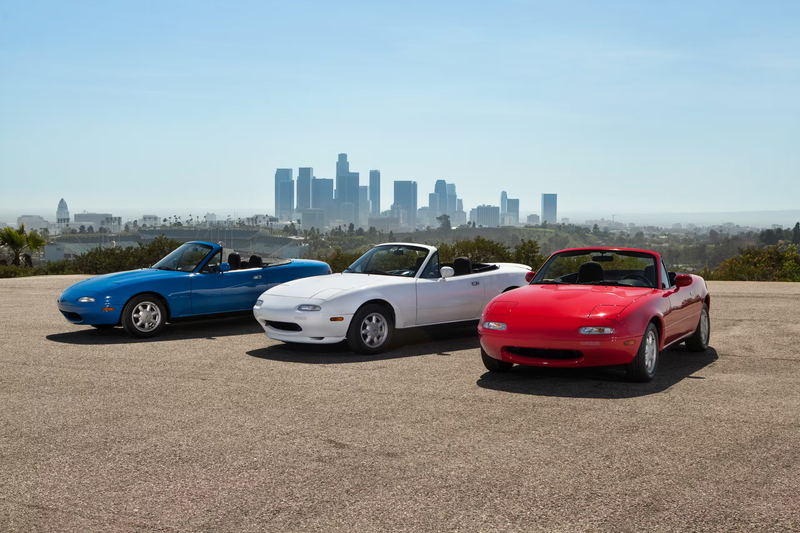ND Miata Wide-Body Kits
Want a wider stance for your ND Miata, whether soft top or RF? This guide covers everything from mild add-ons to full widebody kits. Get real-world width gains, what each kit includes, installation challenges, and the fitment math to plan your setup.

If you’re eyeing a wider stance for your ND, soft top or RF, this guide breaks down the major options from subtle add-ons to full wide kits. You’ll get the real-world widths, what’s actually in the box, install realities, and the fitment math you can drop right into your article.
What “wide” really means on an ND
Not all “wide” is the same. Mild add-ons live in the plus-nine to plus-thirty-five millimeters per side range. Think rear lips or slim blisters that clean up poke from wider street tires without shouting for attention; examples include tidy rear lips, subtle rear “blister” pieces around +9 mm per side, and mid-slim flares near +35 mm per side. Step up to medium over-fenders around +50 mm per side and you’re into genuine flare territory that can cover meaty wheels while avoiding full quarter-panel surgery. Past that, aggressive wide kits jump into the +30/+50 to +40/+80 mm-per-side club. These transform the stance, usually need cutting and sealing, and demand proper wheel, tire, and alignment planning.
The big names and what you actually get
PANDEM / Rocket Bunny (TRA Kyoto). This is the iconic look for the ND: roughly +40 mm per side up front and +80 mm per side in the rear. The full kit typically includes a front lip, front and rear over-fenders, and a rear diffuser, with optional wings or ducktails depending on the version. Installation explicitly requires cutting the factory arches and sealing the inner fenders, so budget for bodywork. Expect parts to land around the five-thousand-plus range unpainted, with typical quotes hovering roughly between 5.2k and 5.5k USD. If you want the widest mainstream stance and that unmistakable silhouette, this is it.

Aimgain wide aero (“Perfect Body” / GT). Aimgain’s sculpted kit adds about +40 mm per side up front and +60 mm per side at the rear. It’s a full aero package, front lip, side skirts, rear skirt, and wide fenders, and the demo cars often run extreme fitments like 16×9 with a very low offset to lean into that show-car vibe. Pricing tends to sit around the mid-three-thousand-dollar range, unpainted. Choose this if you’re after a premium, designer shape with real extra track width but slightly less outrageous rear width than PANDEM.

RallyBacker ND wide fender kit. RallyBacker’s classic riv-on look adds about +30 mm per side up front and +50 mm per side at the rear. It’s FRP, it requires cutting, and it’s soft-top only, it does not fit the RF due to the different quarter/roof intersections. Vendors often share proven wheel setups, like 18×9.5 +15 up front and 18×10.5 around +2 in the rear (sometimes with a small spacer), or square 17×9 with very different offsets front to rear. Parts pricing typically falls around the mid-one-thousands unpainted, making it one of the more affordable “true widebody” options.

ChargeSpeed “Bubble” over-fenders (50 mm). If you want a simpler install path, ChargeSpeed markets these as 100% bolt-on with pre-drilled holes, available in FRP or carbon. Added width is about +50 mm per side, front and rear. Vendors sometimes show conservative examples like 17×8 +30 with a 205/40, but most owners spec wider wheels and lower offsets to actually use the extra flare. This is a great middle ground: a proper wide look with cleaner install logistics and liners largely intact.

Fitment planning that actually works
Treat the stock-body baseline as your anchor: a 215/45-17 square setup is a proven street/track sweet spot on an ND, and it matches up nicely with the size and diameter assumptions used by spec series cars. From there, add width thoughtfully. A tiny rear blister around +9 mm per side cleans up mild poke and lets you keep driver aids happy. Around +35 mm per side often supports 235–245 section street tires with the right offset and a bit more negative camber, usually with minimal cutting. A +50 mm per side flare opens the door to properly meaty wheels; don’t waste the flare with narrow wheels, plan a wider, lower-offset spec to make use of that space. Once you’re in +30/+50 or +40/+60 to +40/+80 territory, you’re pairing nine-to-ten-and-a-half-inch wheels with low or even negative effective offsets, potentially plus spacers, and you should expect more aggressive camber and careful ride-height tuning.
Quick math tip: every 10 mm of extra fender width roughly buys you 10 mm more allowable poke (i.e., 10 mm lower offset) if camber stays similar. Measure your current poke, add the flare’s extra millimeters, and back into your target offsets from there.
Installation realities you should budget for
Be honest about cutting. Many wide kits require slicing the factory arch and then sealing and undercoating the inner fender to keep water out. That’s normal for PANDEM-style installs, and RallyBacker falls in the “cut required” camp too. Some medium-width flare sets, like ChargeSpeed, are marketed as true bolt-on with pre-drilled holes and are much simpler to mock up. Hardware is usually straightforward, think M5 hardware and rivnuts, and a rivnut tool makes life easier if it’s not included.
Modern driver aids matter. Garage Vary shaped its subtle rear pieces to avoid tripping blind-spot monitoring, but anything that significantly changes the body line can alter sensor behavior, so always test before final paint. On 2024-plus ND3 cars, there’s a radar sensor on the left side of the front grille for adaptive cruise and related functions depending on trim. If your kit includes a new front lip, grille insert, or aggressive ducting, check the radar’s sightlines and mounting clearance during mock-up. Also remember RF compatibility: some fender kits simply don’t fit the RF due to its unique quarter/roof geometry, RallyBacker is soft-top only. Finally, plan for lead times. These are boutique parts, commonly made to order in Japan, and four to twelve weeks is a realistic window for high-demand kits.
Budgeting: parts vs. paint and labor
The parts cost is only half the story. Mild add-ons like discreet rear lips or subtle rear blisters can run from a few hundred dollars to the mid-hundreds, but paint and install time can match or exceed that number. Mid-flares such as +35 mm sets or 50 mm bolt-ons often range from the low hundreds into the low thousands depending on FRP versus carbon, and you should earmark additional hundreds to over a thousand for prep, fit, and paint at a quality shop. True wide kits scale up quickly: RallyBacker typically sits around the mid-one-thousands for parts, Aimgain lands in the mid-three-thousands, and PANDEM is generally in the low-to-mid-five-thousands unpainted. Add another one-and-a-half to four grand (or more) for bodywork, cutting, inner-fender sealing, and a proper paint finish.
Wheel, tire, and alignment so it drives right
If you keep stock bodywork, a 215/45-17 square setup is a great daily-plus-track baseline. As you go wider, add negative camber to preserve tire life and turn-in. RallyBacker-level width often pairs with 18×9.5 fronts around +15 and rear wheels around 18×10.5 near zero or slightly positive effective offset, sometimes with a small spacer. Aimgain demo cars famously push low offsets on nine-inch wheels to nail the show stance, so plan on careful camber and fender-to-tire clearance. If you want a reality check on overall diameters, spec-series slicks sit near a 24-inch outer diameter, which is similar to common 17-inch street sizes, keeping your gearing and speedometer intuition sane as you experiment.
Which kit fits which owner?
If you daily the car and just want it to look “right” with modest wheels, a discreet rear lip or a subtle blister is the move, clean, easy, and friendly to driver aids. If this is a weekend toy that needs real rubber without deep surgery, a +35 mm set or a 50 mm bolt-on is the sweet spot, big visual payoff with a simpler install path. If you’re going for a show-stopping or track-focused build, RallyBacker, Aimgain, and PANDEM are the heavy hitters. They bring transformative width and presence, but they also bring cutting, paint, alignment work, and serious wheel specs. Plan, then plan again.




